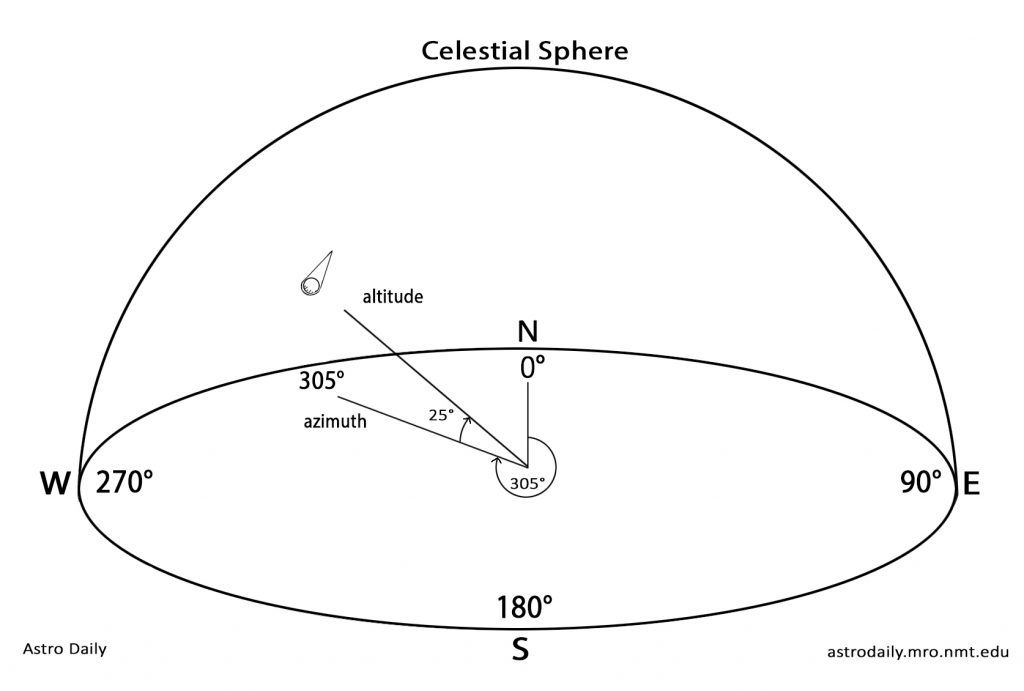Yesterday we talked about measuring distances in the sky using your hands. In that exercise we measured Comet NEOWISE’s altitude, its distance above the observer’s true horizon, as being about 25°. Today we’re going to take a closer look at the coordinate system we use to locate objects in the sky.
To describe the location of an object in the sky, we use a spherical coordinate system where azimuth (az) is measured clockwise around an observer’s local horizon starting due north, and altitude (alt) is the angular distance of a celestial object above the observer’s true horizon.
The sketch below illustrates the location of Comet NEOWISE on the Celestial Sphere in terms of its azimuth and altitude. The Celestial Sphere is an imaginary sphere of infinite radius concentric to Earth and centered around the observer; objects in the sky are considered to lie on this sphere. Measuring the comet’s altitude is what we did yesterday; it is the number of degrees the object lies above your true horizon, easily measurable with your hands.

With the help of the illustration above let’s look at how to determine the azimuth of an object. We start at 0° North and measure clockwise towards the east, until we reach the point on the horizon above which the object can be found in the sky, in this case measured to be at an azimuth of 305°. The easiest way to measure azimuth is with a compass. If you don’t have a regular analog compass, there are many free compass apps for your smartphone.
No doubt you recognize the compass directions of north (0° az), south (180° az), east (90° az), and west (270° az) on this chart. When describing a location using its azimuth we often use the abbreviation of the nearest compass direction as well to further clarify the azimuth angle. Below you will find a list of the abbreviated common compass directions and their azimuth in degrees:
N (0°), NNE (22.5°), NE (45°)
ENE (67.5°), E (90°), ESE (112.5°)
SE (135°), SSE (157.5°), S (180°), SSW (202.5°)
SW (225°), WSW (247.5°), W (270°)
WNW (292.5°), NW (315°), NNW (337.5°)
That’s it for today, eyes to the skies!
M. Colleen Gino, MRO Assistant Director of Outreach and Communications

One Reply to “Spherical Coordinates”
Comments are closed.